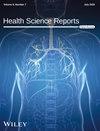Electroacupuncture Improves Sepsis-Induced Acute Gastrointestinal Injury: A Retrospective Propensity Score-Matched Cohort Study
Abstract
Background and Aims
There is limited research on the clinical efficacy of electroacupuncture (EA) for sepsis-induced acute gastrointestinal injury (S-AGI). This study aimed to examine the effects of EA at “Zusanli” (ST36) and “Guanyuan” (RN4) on S-AGI.
Methods
We identified 255 patients with S-AGI from March 2018 to September 2021 who underwent treatment at the Department of Critical Care Medicine, the Second Affiliated Hospital of Guangzhou University of Chinese Medicine. Among these patients, 50 received EA, and 203 did not. After performing 1:2 propensity score matching by sex, age, baseline comorbidity, infection source, laboratory results, and AGI classification, there were 100 patients in the non-EA cohort. In addition to conventional therapies, patients in the treatment group underwent 30 min of EA at ST36-RN4 twice a day for 7 days. The 28-day mortality was recorded.
Results
Our study included 150 participants diagnosed with S-AGI, with an average age of 70.3 years. Kaplan–Meier survival analysis indicated an association between EA treatment and significantly lower 28-day mortality. Adjusted multivariable Cox models consistently suggested a significant reduction in the prevalence of mortality that was associated with the use of EA. After accounting for confounding factors, there was an observed 54% decrease in 28-day mortality among patients who received EA (hazard ratio [HR]: 0.46, 95% confidence interval [CI]: 0.22–0.95, p < 0.05). Subgroup analyses further supported these associations.
Conclusion
There is an indication that EA at ST36-RN4 may be associated with protective effects for patients with S-AGI.


 求助内容:
求助内容: 应助结果提醒方式:
应助结果提醒方式:


